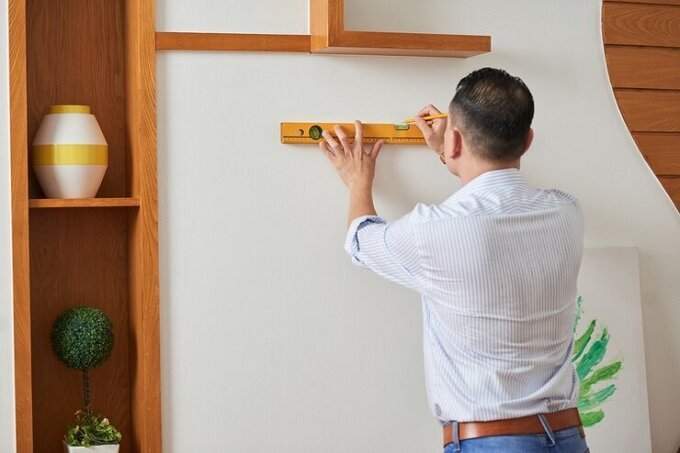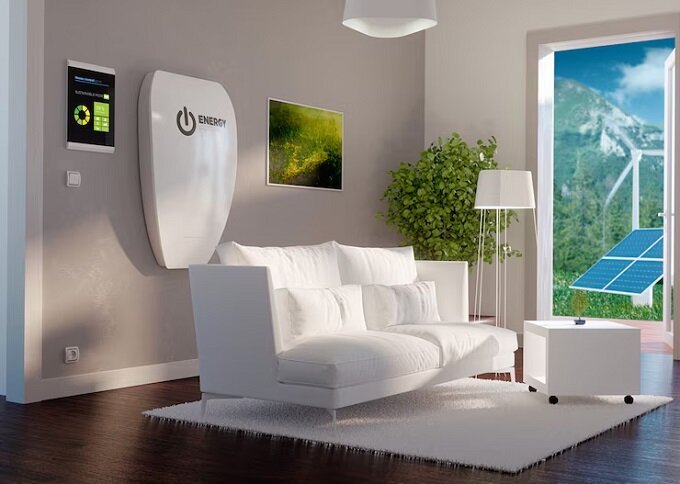Imagine stepping into a space that instantly makes you feel calm, refreshed, and connected to the natural world. That’s the magic of biophilic design. This innovative approach to architecture and interior design is all about bringing the beauty and benefits of nature indoors. By incorporating natural elements, materials, and patterns into our built environments, biophilic design aims to create spaces that promote health, well-being, and sustainability.
In today’s fast-paced, technology-driven world, we spend more time indoors than ever before. But our innate connection to nature hasn’t disappeared. Biophilic design recognizes this deep-seated affinity for the natural world and seeks to bridge the gap between our modern lives and the great outdoors. By embracing this design philosophy, we can create living and working spaces that not only look stunning but also help us thrive.
Key Takeaways
- Biophilic design incorporates natural elements, materials, and patterns into the built environment to promote health, well-being, and sustainability.
- The principles of biophilic design include prioritizing natural elements, balancing prospect and refuge, and engaging the senses.
- Biophilic design offers numerous benefits, such as improved physical and mental health, increased productivity and creativity, and better indoor air quality.
- Strategies for incorporating biophilic design into homes and commercial spaces involve spatial configuration, color schemes, natural materials, indoor plants, water features, and maximizing natural light.
The Principles of Biophilic Design
At its core, biophilic design is guided by a set of principles that aim to create a harmonious relationship between nature and the built environment. These principles include:
- Prioritizing natural elements: One of the key aspects of biophilic design is incorporating natural materials, plants, water features, and natural light into the space. By bringing these elements indoors, we create a direct connection to nature that can have a profound impact on our well-being.
- Prospect and refuge: Biophilic design seeks to balance open, expansive spaces with areas of shelter and privacy. This principle is inspired by our evolutionary instincts to seek out safe spaces that offer both protection and a clear view of our surroundings.
- Engaging the senses: While visual connections to nature are important, biophilic design goes beyond just what we see. By designing for multi-sensory experiences that engage touch, smell, and sound, we create a more immersive and restorative environment.
The Benefits of Biophilic Design
The power of nature in promoting health and happiness is well-documented, and biophilic design harnesses this potential in our built environments. Some of the key benefits of biophilic design include:
| Benefit | Description |
|---|---|
| Improved physical and mental health | Exposure to nature has been shown to reduce stress, lower blood pressure, enhance mood, and improve cognitive function. |
| Increased productivity and creativity | Biophilic design elements like natural light and indoor plants can boost productivity and creativity in the workplace. |
| Better indoor air quality and thermal comfort | Incorporating plants and natural ventilation can improve air quality and create a more comfortable indoor environment. |
| Stronger connection to the natural world | By bringing nature inside, biophilic design fosters a deeper appreciation and connection to the world around us. |
| Contribution to sustainability | Biophilic design often goes hand-in-hand with sustainable design practices, promoting energy efficiency and environmental stewardship. |
Biophilic Design Strategies for the Home
So, how can you bring the benefits of biophilic design into your own living space? Here are some strategies to consider:
- Spatial configuration: Open floor plans and strategic placement of windows can create a sense of spaciousness and connection to the outdoors.
- Color schemes inspired by nature: Soothing blues, greens, and earth tones can evoke the calming effects of natural landscapes.
- Incorporating natural materials: Materials like wood, stone, and natural textiles add visual and tactile interest while creating a sense of warmth and authenticity.
- Integrating indoor plants and living walls: Bringing plants indoors is one of the easiest and most effective ways to incorporate biophilic design. From a few strategically placed potted plants to full-scale living walls, the options are endless.
- Adding water features: Indoor fountains or aquariums can provide a soothing auditory and visual experience while also improving air quality and humidity levels.
- Maximizing natural light: Skylights, large windows, and reflective surfaces can help bring more natural light into your home, enhancing both the aesthetic appeal and the biophilic benefits.
Biophilic Design in Commercial and Public Spaces
The principles of biophilic design aren’t limited to residential spaces. In fact, some of the most impressive examples of biophilic design can be found in commercial and public buildings. Here are a few ways biophilic design is making an impact in these settings:
- Enhancing workplace productivity and employee well-being: By incorporating biophilic elements like green walls, natural light, and outdoor views, companies can create work environments that promote health, creativity, and job satisfaction.
- Improving patient outcomes and staff satisfaction in healthcare settings: Biophilic design has been shown to reduce stress, improve healing times, and boost morale in hospitals and other healthcare facilities.
- Creating calming, restorative environments in educational institutions: From elementary schools to universities, biophilic design can help create learning spaces that foster focus, creativity, and mental well-being.
- Promoting sustainability and connection to nature in public buildings and urban spaces: Biophilic design can be used to create green oases in the heart of cities, providing much-needed respite and connection to nature for urban dwellers.
Challenges and Considerations
While the benefits of biophilic design are clear, implementing it successfully requires careful consideration and planning. Some of the challenges and considerations to keep in mind include:
- Balancing biophilic design with practical constraints and budgets: Incorporating natural elements and materials can sometimes come with additional costs or maintenance requirements. It’s important to find a balance that works for your specific project and resources.
- Ensuring biophilic elements are integrated thoughtfully and cohesively: Biophilic design shouldn’t feel like an afterthought or a collection of disconnected elements. The most successful projects integrate biophilic principles seamlessly into the overall design.
- Addressing maintenance and upkeep requirements: Living elements like plants and water features require ongoing care and attention. It’s important to have a plan in place for maintaining these elements to ensure they continue to thrive and provide their intended benefits.
- Overcoming preconceptions about the “naturalness” of biophilic design: Some people may view biophilic design as a passing trend or a superficial attempt to bring nature indoors. Educating clients and stakeholders about the science and research behind biophilic design can help overcome these preconceptions.
Conclusion
Biophilic design is more than just a passing trend; it’s a powerful tool for creating healthier, more sustainable, and more inspiring spaces. By embracing the principles of biophilic design and incorporating elements of nature into our built environments, we can tap into the innate human affinity for the natural world and create spaces that truly nurture and support us.
Whether you’re designing a new home, renovating a workplace, or planning a public space, considering the principles of biophilic design can help you create environments that are not only beautiful but also deeply restorative and beneficial. So go ahead, bring a little piece of the outdoors inside, and experience the transformative power of nature in your everyday life.



